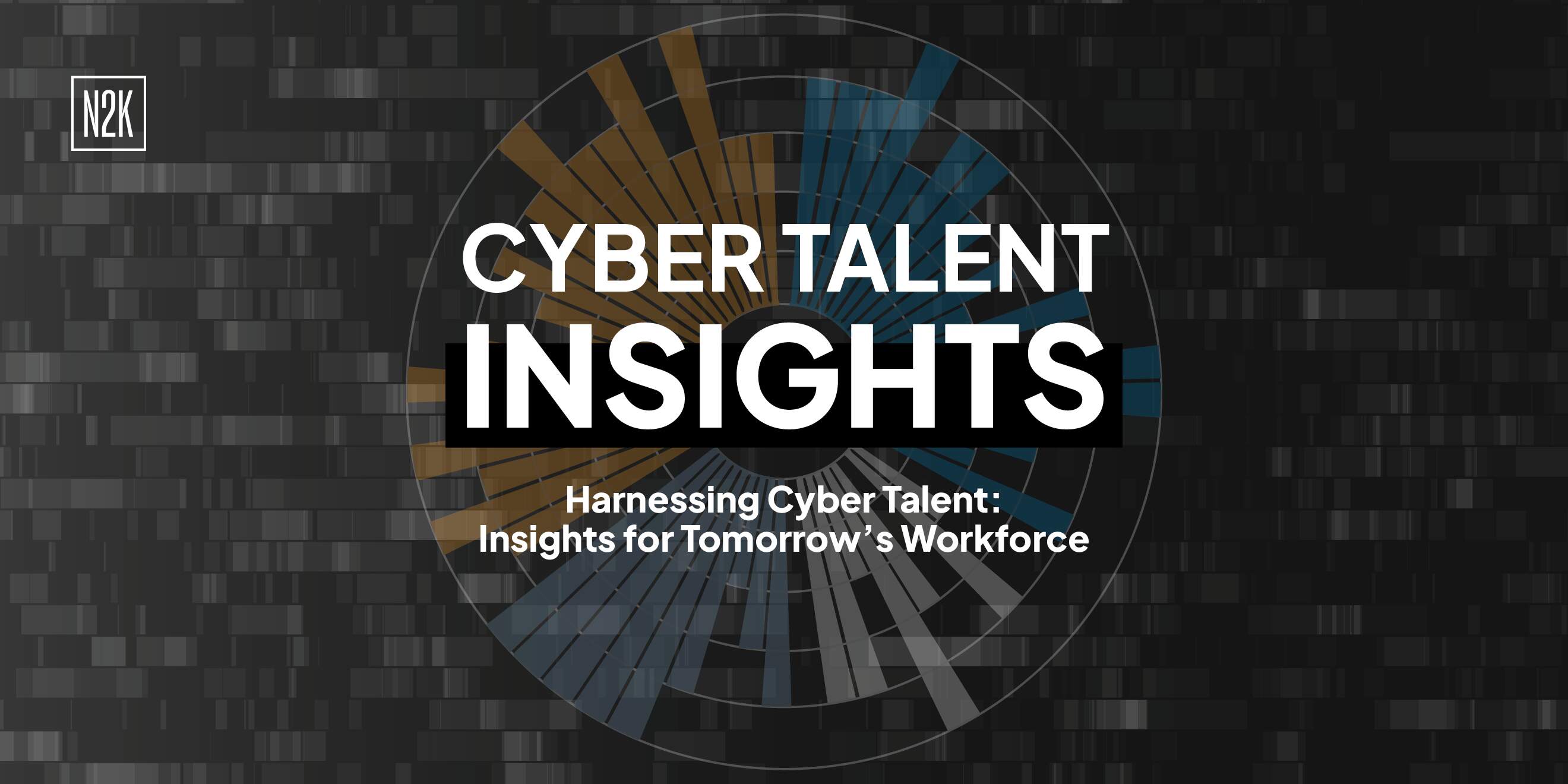
Listen to episode one, "Cyber Talent Insights: Navigating the landscape for enterprise organizations" of the Cyber Talent Insights special series podcast.
Harnessing Cyber Talent: Insights for Tomorrow's Workforce
In a time where cybersecurity threats loom larger by the day, developing a skilled cybersecurity workforce is more crucial than ever. The dynamic nature of cybersecurity demands a workforce well-equipped with technical, professional, and leadership skills to meet new and evolving challenges. The podcast episode "Cyber Talent Insights: Navigating the Landscape for Enterprise Organizations" on the N2K CyberWire Network explores this topic in-depth, offering invaluable perspectives from leading cybersecurity workforce development experts.
Workforce Intelligence: A Strategic Imperative
Central to the cybersecurity workforce discussion is workforce intelligence, a strategic approach to understanding the current skills landscape and anticipating future needs. For organizations looking to secure top talent, a deep dive into the motivations and aspirations of cybersecurity professionals is essential. Strategies such as offering continuous learning opportunities and fostering a culture that prioritizes growth and learning can elevate an organization’s attractiveness to potential recruits.
Leaders must emphasize innovative approaches to attract, recruit, and retain top cybersecurity talent. Traditional recruiting methods may not suffice in the face of evolving cyber threats and the increasing sophistication of attackers.
Bridging the Gap: Education and Skills Development
Developing a top-notch cybersecurity workforce requires a comprehensive approach that includes formal education, continuous learning, and professional development opportunities. Formal education, such as a degree in cybersecurity or a related field, can provide a solid foundation of knowledge and skills. Continuous learning through workshops, webinars, and online courses is necessary for keeping up with the rapidly changing landscape of cybersecurity threats and technologies.
Professional development opportunities, such as attending conferences and participating in industry groups, can provide networking and mentorship opportunities to help individuals advance their careers in cybersecurity. By bridging the gap between education and skills development, organizations can build a strong cybersecurity team capable of protecting their systems and data from cyber threats.
Future-Proofing the Cybersecurity Workforce
Recognizing the importance of diversity, equity, and inclusion is advantageous for growing organizations in building resilient teams capable of responding to new cyber threats. Embracing these values creates an environment that promotes innovation and collaboration while attracting a broader talent pool. By fostering a diverse and inclusive workforce, organizations can tap into a dynamic range of perspectives, experiences, and skills, leading to more adaptable and effective solutions to cybersecurity challenges.
Therefore, organizations must recognize the value of diversity, equity, and inclusion in building strong and resilient cybersecurity teams. By embracing these values, organizations can create a workplace culture that promotes creativity, innovation, and collaboration, leading to more effective responses to shifting cybersecurity challenges.
Takeaways for Cybersecurity and Business Leaders
Cybersecurity and business leaders must realize that maintaining a skilled and knowledgeable cybersecurity workforce is critical to not only upholding organizational security but also creating a sustainable talent pipeline that can adapt to changing business needs, budgets, and strategies.
To achieve this, adopting a strategic approach to cybersecurity workforce development goes beyond merely recruiting new talent. Businesses must actively and regularly invest in training, mentorship, and professional development programs to cultivate a culture that values learning and innovation for every stage of one’s career. This approach demonstrates an employer's commitment to their employees’ success, which can pay dividends on employee satisfaction and retention.
By investing in the continuous development of their cybersecurity workforce, businesses can stay ahead of the curve and reduce the risk of cyber threats. Therefore, businesses that prioritize continuous learning and development for their cybersecurity workforce will be better prepared to face future challenges.
Takeaways for Current and Aspiring Cybersecurity Professionals
For individuals who aspire to become cybersecurity professionals, it is important to understand that the field constantly evolves and requires diverse and adaptable skills. Specialized cybersecurity fields exist today that did not 5-10 years ago. Take time to explore different roles and specializations to find one that suits your background or interests. Focus on continuously investing in your skills, remain curious, and be prepared to adapt to the changing landscape.
One effective way to expand your knowledge and skills is to leverage online training resources. Numerous online courses, webinars, podcasts, and blogs provide valuable insights and tips on various aspects of cybersecurity. Additionally, attending workshops, seminars, and conferences can provide valuable opportunities for networking, learning, and staying up-to-date with the latest trends and techniques.
Another key aspect of developing your skills in cybersecurity is mentorship. Finding an experienced mentor who can guide you and offer valuable advice and feedback can be invaluable. A mentor can also provide insights into the industry, help you navigate challenges, and guide career growth.
"Cyber Talent Insights: Navigating the Landscape for Enterprise Organizations" offers a wealth of knowledge for anyone interested in developing the cybersecurity workforce. The insights Dr. Heather Monthie and her N2K colleagues share underscore the importance of a proactive and informed approach to workforce development. As cybersecurity threats continue to evolve, so must our efforts to cultivate a workforce capable of protecting against them. Engaging in discussions like these is the cornerstone to building a safer digital future.
